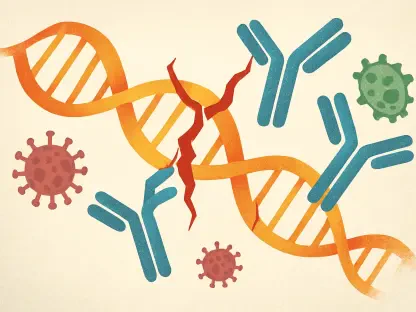Artificial intelligence (AI) is making significant strides in the healthcare sector, reshaping how diseases are detected and providing new tools for health education, especially for adolescents. As the incidence of Lyme disease rises and the thirst for health information among young people grows, AI’s innovative application in these areas underscores its transformative potential. Lyme disease, a tick-borne infection affecting hundreds of thousands annually, remains a challenge for early detection. The integration of AI into diagnostic methods offers renewed promise in tackling this issue. Concurrently, as teenagers increasingly navigate their health journeys online, AI-powered platforms designed to offer reliable medical information could redefine how young people approach health queries, lending both authority and accessibility.
AI Elevates Lyme Disease Detection
Lyme disease, caused by Borrelia bacteria transmitted through tick bites, presents a pressing need for better diagnostic methods given its prevalence and potential health impact. Traditional diagnostic protocols primarily rely on two-tier serology tests, which unfortunately only achieve accurate early detection in a minority of cases. This shortfall often results in missed opportunities for timely interventions, allowing the progression to debilitating chronic health issues that include arthritis, cognitive difficulties, and persistent fatigue in untreated patients. An AI-powered blood test designed to enhance early-stage Lyme disease diagnosis represents a groundbreaking shift in addressing these diagnostic challenges. With an impressive sensitivity and specificity rate, this new method promises a more reliable identification of Lyme disease, facilitating critical early treatment and reducing the risk of lasting complications.
The development of this AI-driven diagnostic approach involved sophisticated analysis and testing, initially using rhesus macaque monkeys whose immune responses closely resemble human reactions to Lyme-causing bacteria. By focusing on immune profiles, a distinct panel of 10 specific proteins was identified, setting the stage for a single comprehensive test versus the multiple tests often required under current methods. Machine learning algorithms play a critical role, augmenting the test’s precision by discerning unique immune response patterns in infected individuals, thus setting it apart from existing diagnostic standards. This rigorous development strategy was extended to human trials involving a significant sample size, validating the capability of the AI test to correctly identify early Lyme infections and strengthening its standing as a highly accurate diagnostic tool.
AI Applications in Adolescent Health
The other major frontier in healthcare where AI shows potential for significant impact is adolescent health information access. Young individuals frequently turn to the internet for health-related queries, often on topics they might find difficult to address with adults. Medicine-GPT, a specialized AI model developed as an iteration of ChatGPT, is tailored to meet this demand by providing medical insights with enhanced accuracy. In comparative evaluations with its predecessor, ChatGPT-4, Medicine-GPT exhibited noticeable improvements in areas of completeness, reasoning, and medical helpfulness. The advancements in these areas suggest an increased capability of such AI tools to deliver nuanced, contextually aware health guidance to adolescents, equipping them with essential knowledge while fostering responsible use of digital health resources.
Nevertheless, while Medicine-GPT shows promise, it also illuminates important considerations for employing AI in sensitive health discussions. These AI models often articulate sophisticated medical information, which can sometimes be misinterpreted, especially by younger users who might not have the medical literacy to appropriately contextualize the information they receive. This potential for misunderstanding emphasizes the necessity of creating AI systems that are not just factually accurate but also user-centric, offering information that is both accessible and actionable for teenagers. By aligning these systems with human communication norms, such AI applications are positioned not as replacements but as enhancements to traditional health education, ensuring they supplement professional counsel when appropriate.
The Future of AI in Healthcare
Lyme disease, caused by Borrelia bacteria from tick bites, presents an urgent need for better diagnostics due to its prevalence and impact on health. Traditional tests mainly depend on two-tier serology, which often fails to detect the disease early, leading to missed early treatments. This delay can cause chronic issues such as arthritis, cognitive problems, and fatigue in untreated patients. An AI-based blood test offers a breakthrough in early Lyme diagnosis, addressing current challenges with high sensitivity and specificity. This method promises more reliable detection, paving the way for timely treatment and minimizing long-term complications.
The AI diagnostic approach underwent extensive research, starting with rhesus macaque monkeys whose immune responses are similar to humans. By analyzing these responses, a set of 10 proteins was identified, allowing for a single, more efficient test. Machine learning enhances the test’s accuracy by identifying unique immune patterns in infected individuals, distinguishing it from existing methods. Human trials confirmed the AI test’s ability to accurately detect early Lyme infections, establishing it as a promising diagnostic tool.









